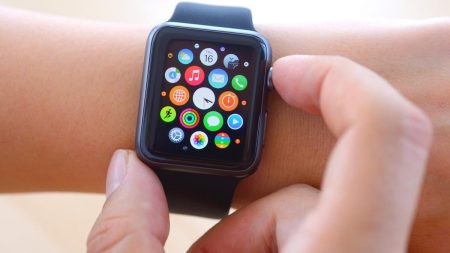The author recounts a personal experience with health anxiety, triggered by persistent migraines. A call to a medical helpline, based on the author’s described symptoms, resulted in a recommendation to immediately visit the hospital, escalating the author’s anxiety to the point of anticipating imminent death. The actual cause was severe muscle strain, a benign condition misconstrued due to limited information. This incident underscores the author’s tendency to catastrophize physical sensations, interpreting minor ailments as signs of severe illness.
This predisposition to anxiety has shaped the author’s relationship with health tracking technology. While initially finding value in the data provided by devices like the Apple Watch, the constant monitoring became a source of heightened anxiety. Normal fluctuations in heart rate or other metrics were misinterpreted as alarming signs, leading to a cycle of obsessive checking and panic. Although continuing to use smartwatches, the author actively avoids features like ECGs, recognizing the potential for these tools to exacerbate their anxiety.
The introduction of AI-powered health analysis further fuels the author’s concerns. Samsung’s promotion of AI integration into health tracking, offering personalized insights and the ability to pose health-related questions to an AI agent, is perceived not as helpful but as a potential source of distress. The author views this as an overwhelming influx of data, potentially leading to further obsessive monitoring and misinterpretation. The ability to query an AI about health concerns is particularly troubling, evoking the negative experiences of online symptom searches.
The author’s apprehension stems from the understanding that AI, like the medical helpline operator, provides answers based on limited information. The fear is that an AI, presented with a symptom, might list a range of potential causes, including rare and serious illnesses, mirroring the author’s own tendency to jump to worst-case scenarios. This could trigger anxiety, even though the actual cause is likely to be something far less serious. The author questions whether AI can provide the necessary context to mitigate worry, or if it will simply amplify anxieties by presenting a litany of possibilities.
The analogy is made to Google’s AI, which has sometimes provided inaccurate or nonsensical information. The author worries that a similar lack of accuracy in a health-related context could be significantly more damaging, potentially leading to full-blown panic attacks. The ideal scenario, the author suggests, would be an AI capable of recognizing and dismissing unfounded anxieties, providing reassurance rather than fuel for worry. The experience of a compassionate doctor who calmed the author’s fears during the hospital visit serves as a model for this desired AI interaction.
Ultimately, the author concludes that while AI-powered health tools may eventually offer helpful insights and reassurance, the current state of the technology presents too great a risk for someone with pre-existing health anxiety. The potential for misinterpretation, information overload, and inaccurate responses outweighs the potential benefits, leading to the decision to avoid AI integration in personal health management. The author hopes that future advancements might address these concerns, allowing for a more positive and less anxiety-provoking experience with AI health tools. Until then, however, the focus remains on managing anxiety through other means, avoiding triggers like excessive health data and online symptom searches.










